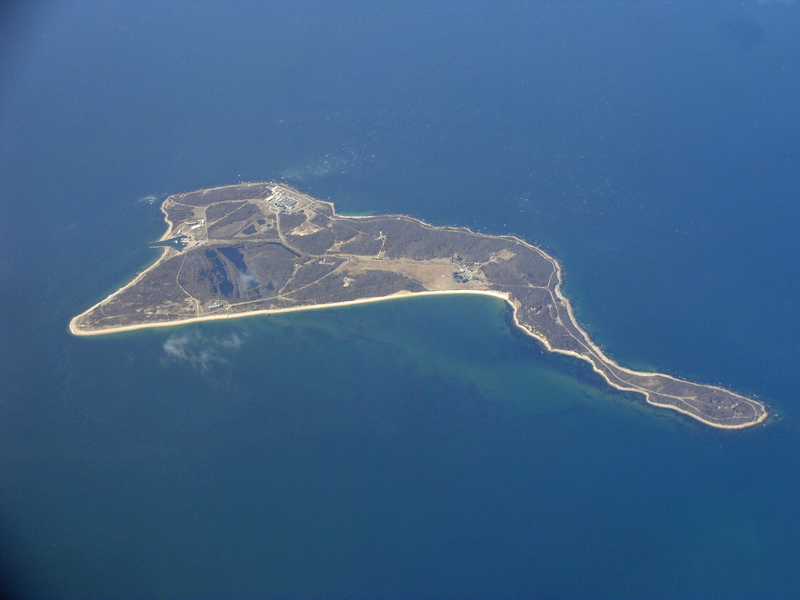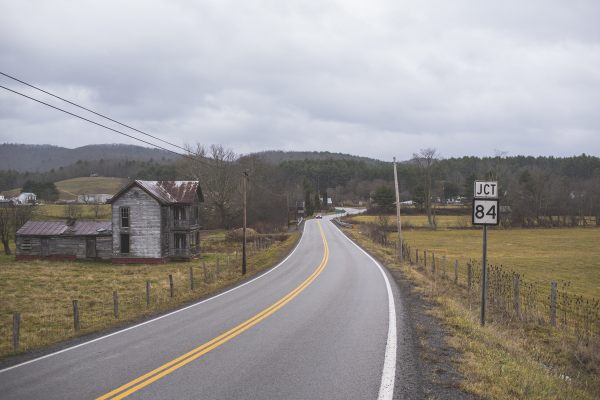The Island of Animal Experiments
New York’s Plum Island has been the source of so many conspiracy theories over the years.

An aerial view of Plum Island. (Photo: kyselak/CC BY-SA 3.0)
When the Montauk Monster washed up on the shore in Montauk, New York, in the summer of 2008, it took the internet by storm. The creature was bloated, hairless, and appeared to have a beak. To the casual observer, it was completely unidentifiable as any known animal species. Almost immediately, amateur cryptozoologists began asking if it had come from Plum Island.
The Montauk Monster came to be variously explained as being a disfigured raccoon, sea turtle, or dog, but its body is said to have disappeared, and no firm was ever reached as to its origin.
A few years later, in 2010, when the Associated Press reported that a human body with “very long fingers” had been found on Plum Island’s shore, the speculation kicked into gear again. (“Maybe the long-fingered man didn’t wash up on the shore,” Gothamist wrote. “Maybe he was trying to escape!”)
While the internet had suddenly brought the rumors about sinister goings-on at the heavily restricted Plum Island Animal Disease Center (PIADC) into the limelight, the facility had long been the subject of such controversy.

The Plum Island Animal Disease Center in 1971. (Photo: US Department of Agriculture/CC BY 2.0)
Established by the U.S. Department of Agriculture in 1954 and transferred to the Department of Homeland Security following the terrorist attacks of 9/11, the goal of the research center research center was supposedly to study animal borne diseases, such as Foot and Mouth Disease, in order to prevent them from spreading.
But at least at the beginning, there was more being studied on Plum Island than disease prevention. From early on, Plum Island’s infamous Building 257 was also being used to create new, designer pathogens, intended as weapons of biological warfare in the ongoing Cold War. And while these experiments were supposedly halted by Richard Nixon in 1969, many wondered if they had continued in secret.
Among those asking questions was Michael Carroll, whose 2004 bestseller, Lab 257, takes a hard look at the history of the PIADC. In the book, Carroll goes so far as to speculate that the PIADC is the birthplace of Lyme Disease, theorizing that migrating birds may have picked up infected ticks from Plum Island and carried them across the Long Island Sound to Lyme, Connecticut, where Lyme was first observed in 1975.
And die-hard conspiracy theorists believe that man-made diseases, no matter how deadly, are the least of what’s being cooked up on the island: some have wondered if the Montauk Monster, along with that long-fingered man, are government engineered mutants, human-animal hybrids, or something far worse.
Predictably, the government isn’t saying much about it: “I cannot comment on our list of pathogens and the inventories and all those things that are sensitive information,” Luis Rodriguez, a Plum Island research leader, told CBS News in 2012. Until the next time something strange washes up in the Hamptons, the mystery remains.
These articles are brought to you by Netflix's Stranger Things. All Episodes Now Streaming.








Follow us on Twitter to get the latest on the world's hidden wonders.
Like us on Facebook to get the latest on the world's hidden wonders.
Follow us on Twitter Like us on Facebook